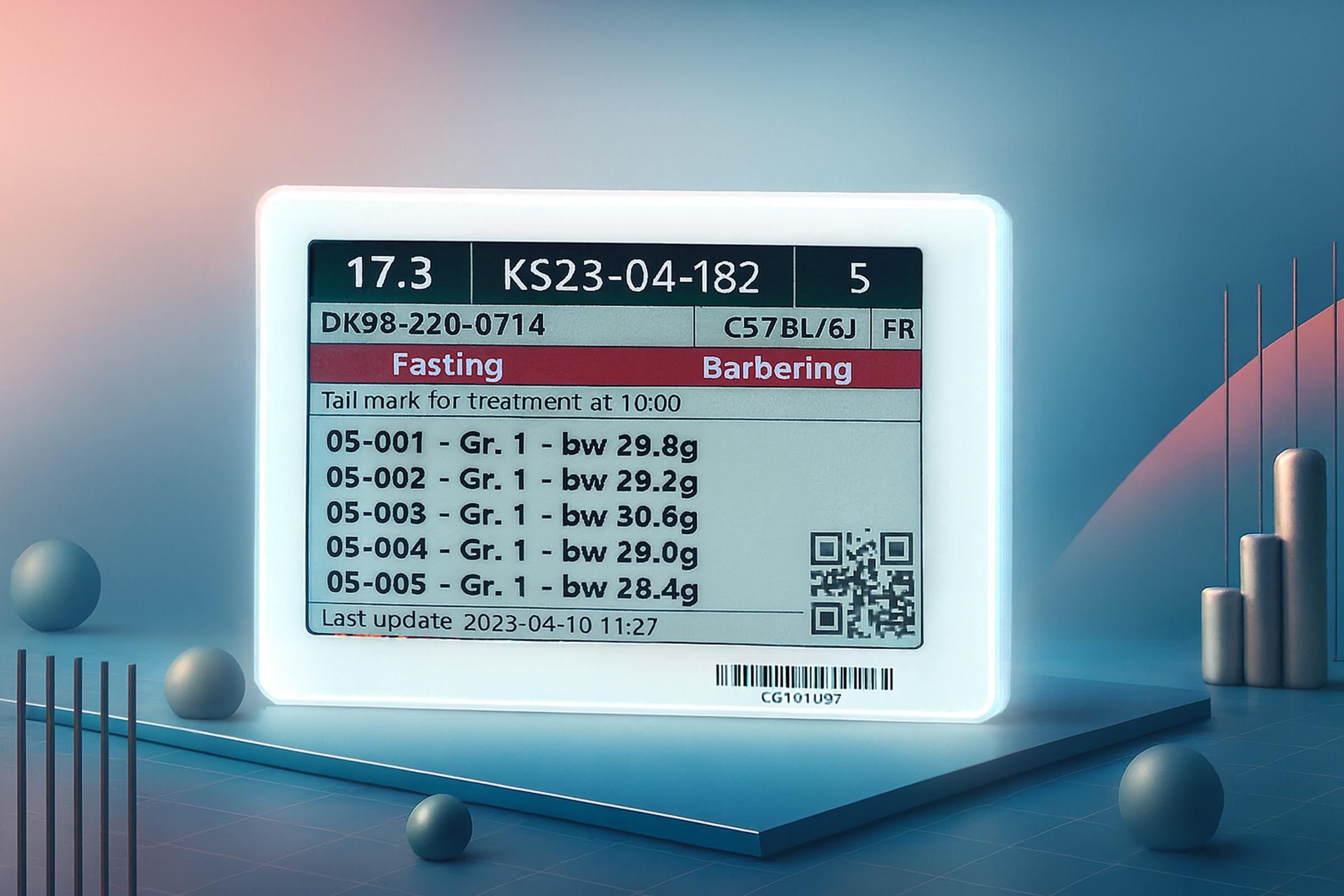Unveiling the E-Ink Technology behind Picoteam’s Digital Cage Cards
E-Ink Technology: From Retail to Animal Research
E-ink technology, also known as electronic paper, is at the core of Picoteam’s digital cage cards for animal research facilities. Initially developed in the late 1990s, e-ink gained significant traction in the early 2000s when it was adopted for electronic shelf labels (ESLs) in retail.
Retailers benefited from automated price updates and reduced manual labor, thanks to e-ink’s low power consumption, high visibility, and durability. Building on this success, Picoteam has adapted e-ink technology to improve data management in animal research, where clarity, efficiency, and durability are essential.
Picoteam’s digital cage cards utilize Bluetooth connectivity for seamless wireless data transmission, enabling real-time updates without the need for complex wiring. This ensures efficient communication between the cards and animal data systems, making it ideal for continuous monitoring.
How E-Ink Works
E-ink differs from traditional displays by reflecting ambient light rather than emitting it, which reduces eye strain, provides a more natural reading experience, and ensures clear visibility from wide viewing angles.
A key advantage of e-ink is its power efficiency: it only consumes energy when the content changes. Once the data is displayed, it remains visible without drawing additional power. This allows Picoteam’s digital cage cards to run for up to 5 years on a single battery, making them ideal for environments where constant power access may not be practical.
As electronic paper displays continue to evolve, they are becoming thinner, more robust, and longer-lasting— ideal for the challenging conditions in animal research facilities
Durability in Research Environments
Research environments require equipment that is both durable and reliable, and Picoteam’s e-ink digital cage cards meet these standards. The displays are resistant to water and harsh cleaning agents like alcohol, allowing for regular disinfecting without damage. The cards are designed to handle temperature fluctuations and extreme environments, such as cold storage or heated areas, ensuring reliable long-term performance.
Furthermore, they are designed to function in specialized atmospheres, such as those involving CO2 or nitrogen, without compromising performance. Their robustness makes them well-suited to handle daily cleaning and environmental changes commonly encountered within animal facilities.
Enhanced Visibility and Readability
E-ink technology offers exceptional visibility, even in challenging lighting conditions. Traditional paper cage cards are often difficult to read due to unclear or inconsistent handwriting, and they can be hard to decipher in bright environments. In contrast, e-ink displays remain sharp and easy to read, even under direct sunlight. This is essential for researchers who need quick access to accurate information. With wide viewing angles, e-ink displays allow information to be seen from different positions without the need for repositioning or straining to view details. In well-lit labs or other bright environments, Picoteam’s digital cage cards ensure that essential data is always visible and easy to interpret.
Enhancing Workflow Efficiency
Picoteam’s digital cage cards integrate seamlessly with existing animal management systems or structured data sources like Excel, enabling real-time updates. This ensures that all essential animal and housing information is accurately captured and displayed. By transitioning from traditional paper cards, which are prone to errors and wear, facilities can reduce human error, improve compliance with regulatory requirements, and streamline daily operations.
The system’s reliable wireless performance, low power consumption, and minimal operational costs allow research facilities to efficiently manage animal data in real time, enhancing workflow and operational accuracy
Conclusion
Picoteam’s e-ink-powered digital cage cards provide a durable, energy-efficient, and easily readable solution for animal research facilities. Their long battery life, resistance to environmental challenges, and seamless integration with existing systems ensure research institutions can maintain accurate, up-to-date animal data with minimal maintenance. Designed to withstand cleaning agents, specialized gases, and different temperatures, these digital cage cards meet the unique demands of animal research environments, improving both workflow and efficiency across the board


